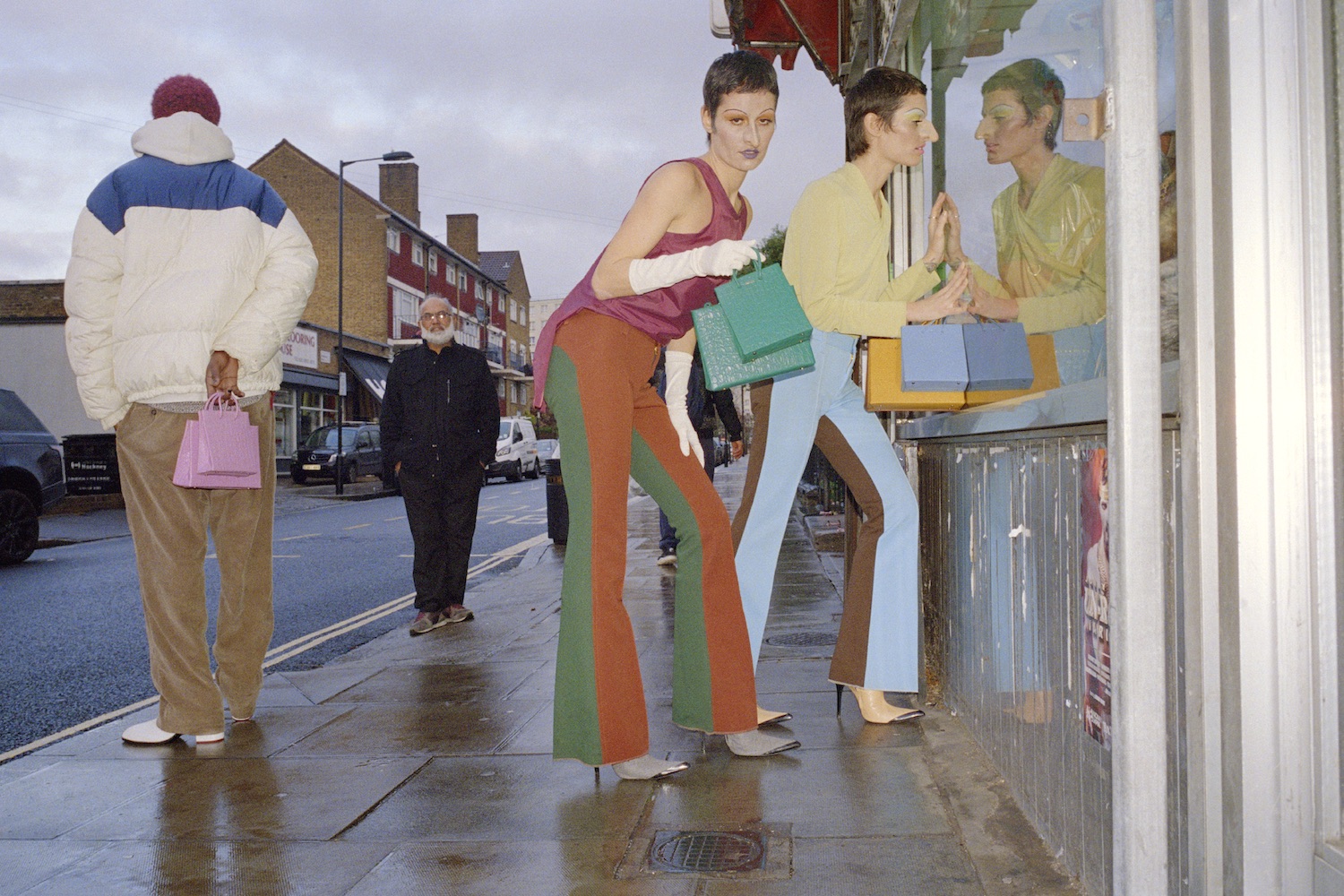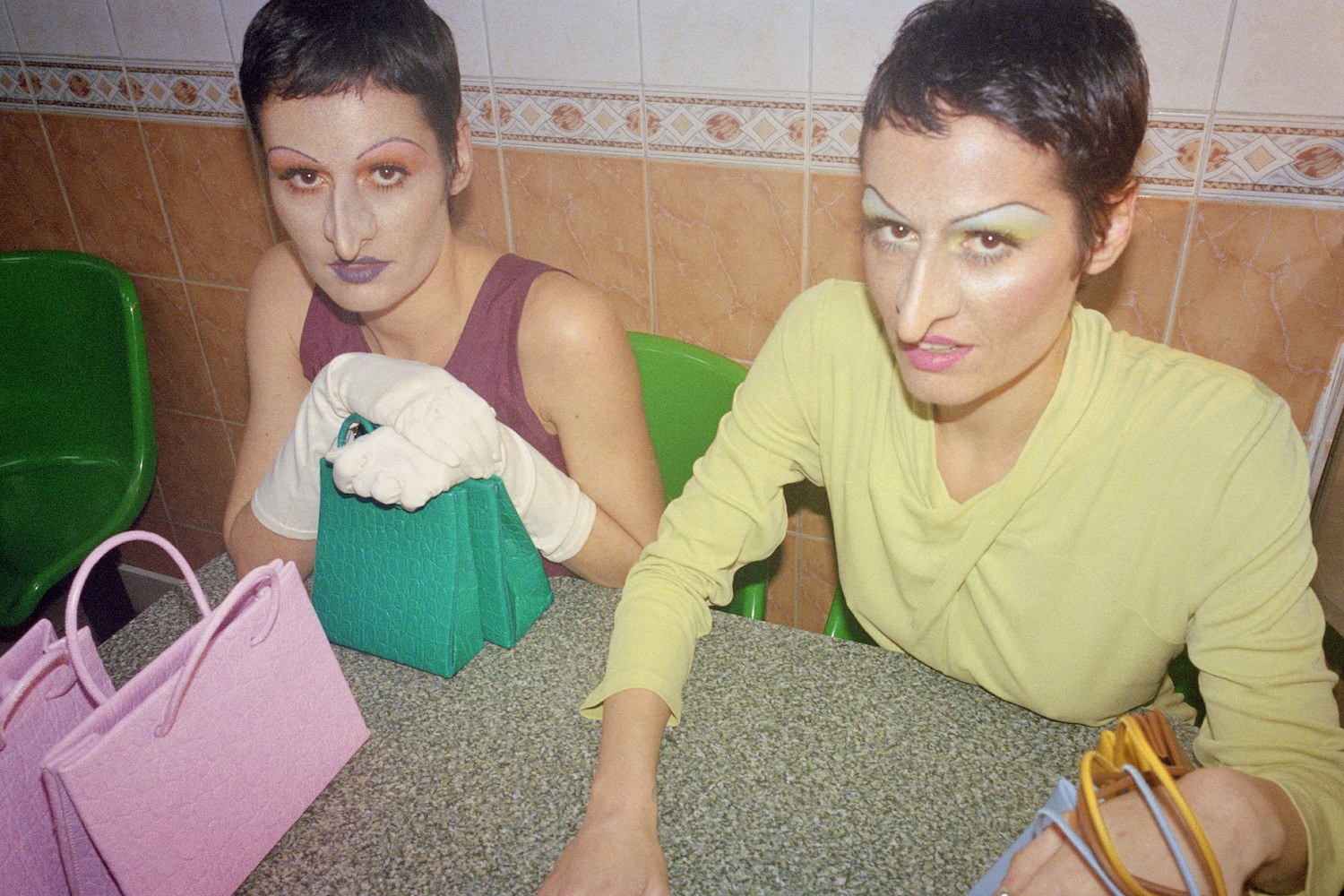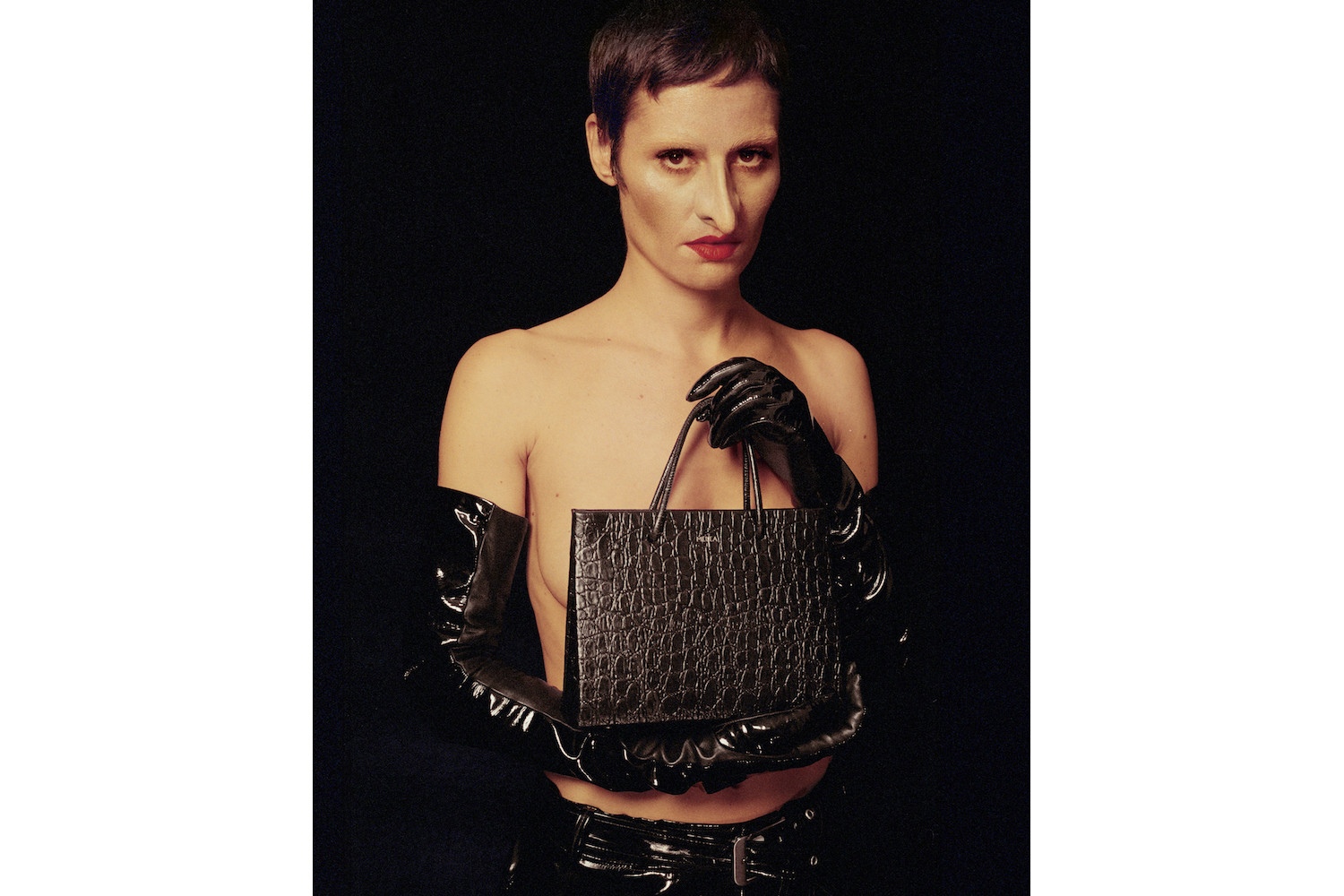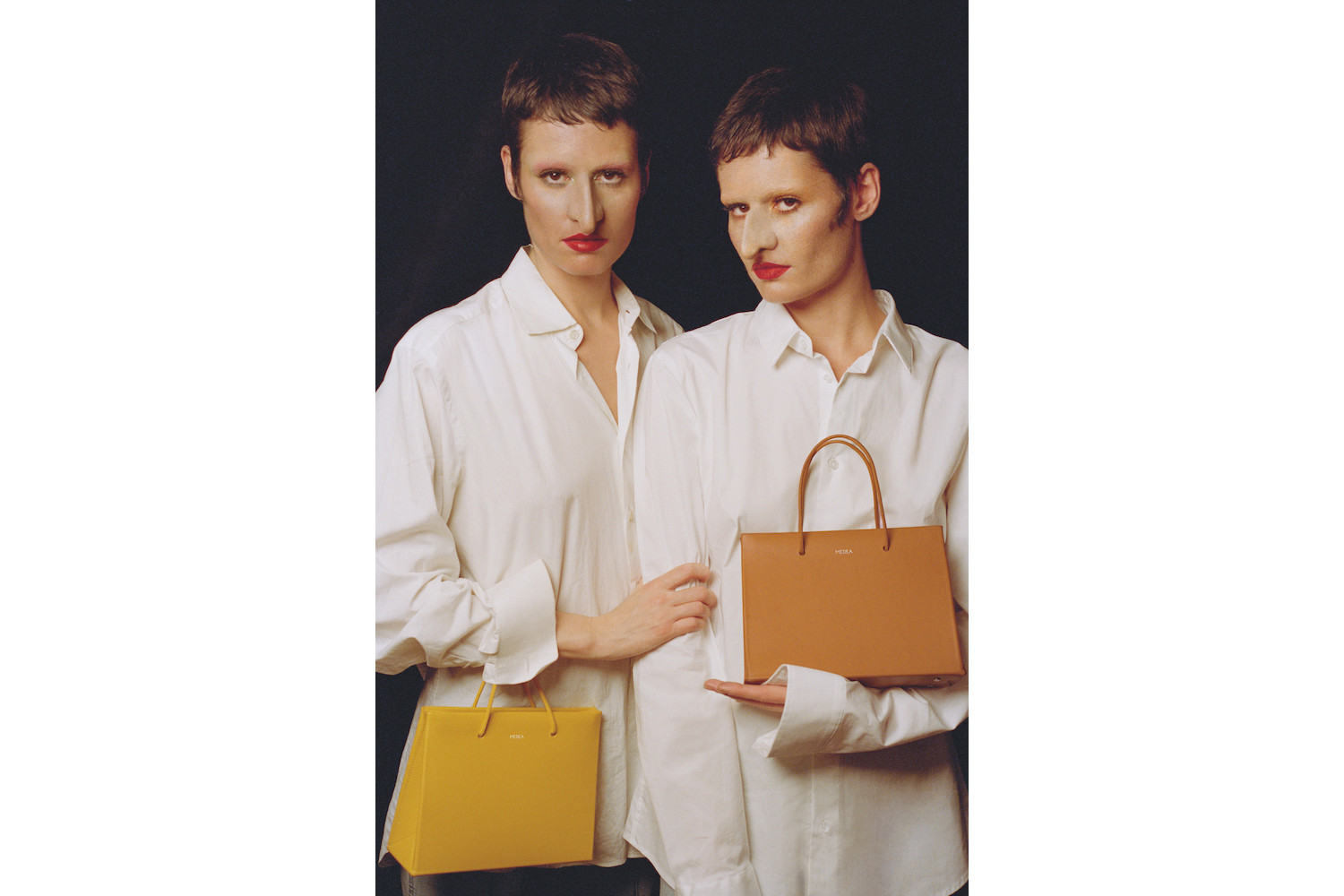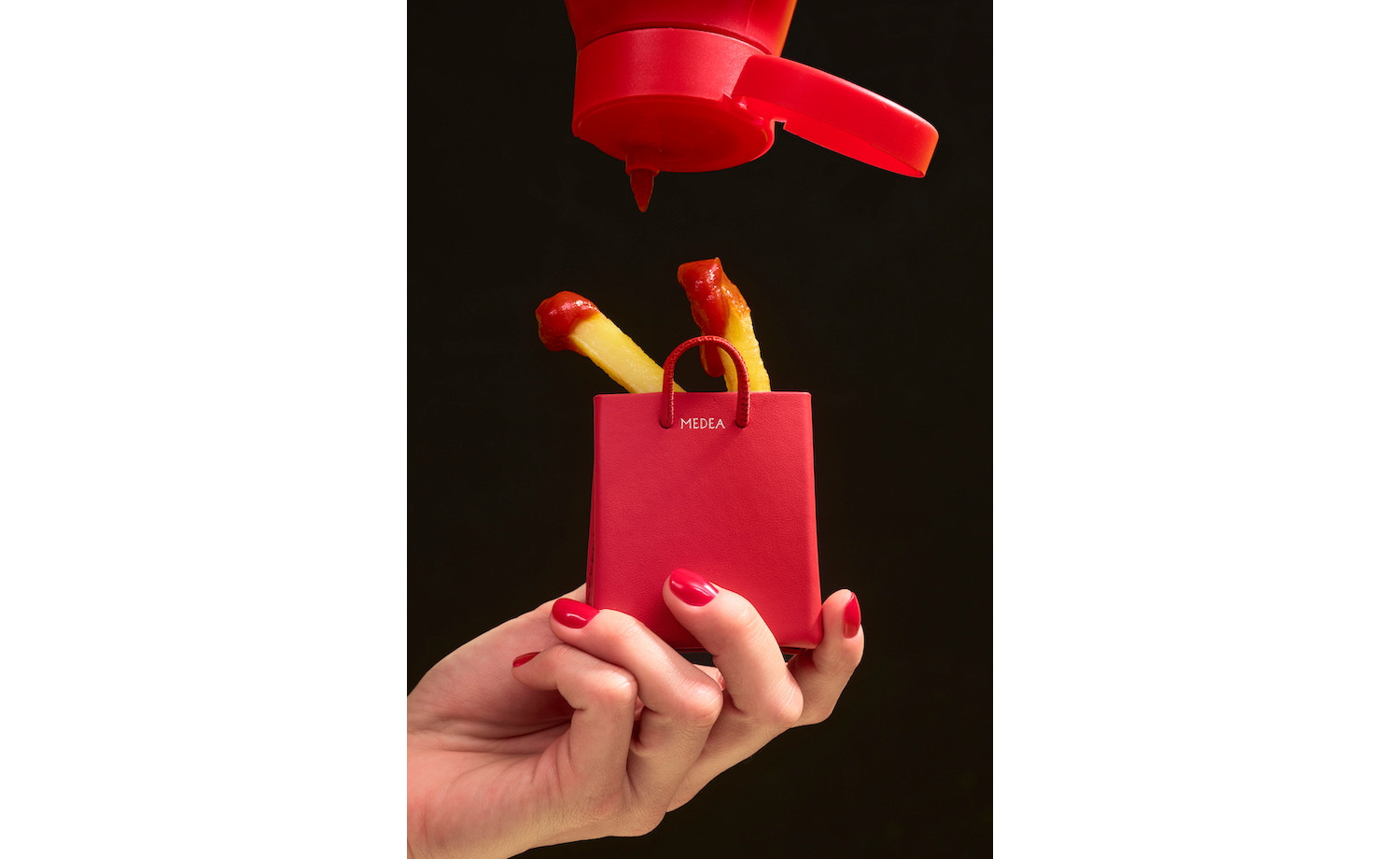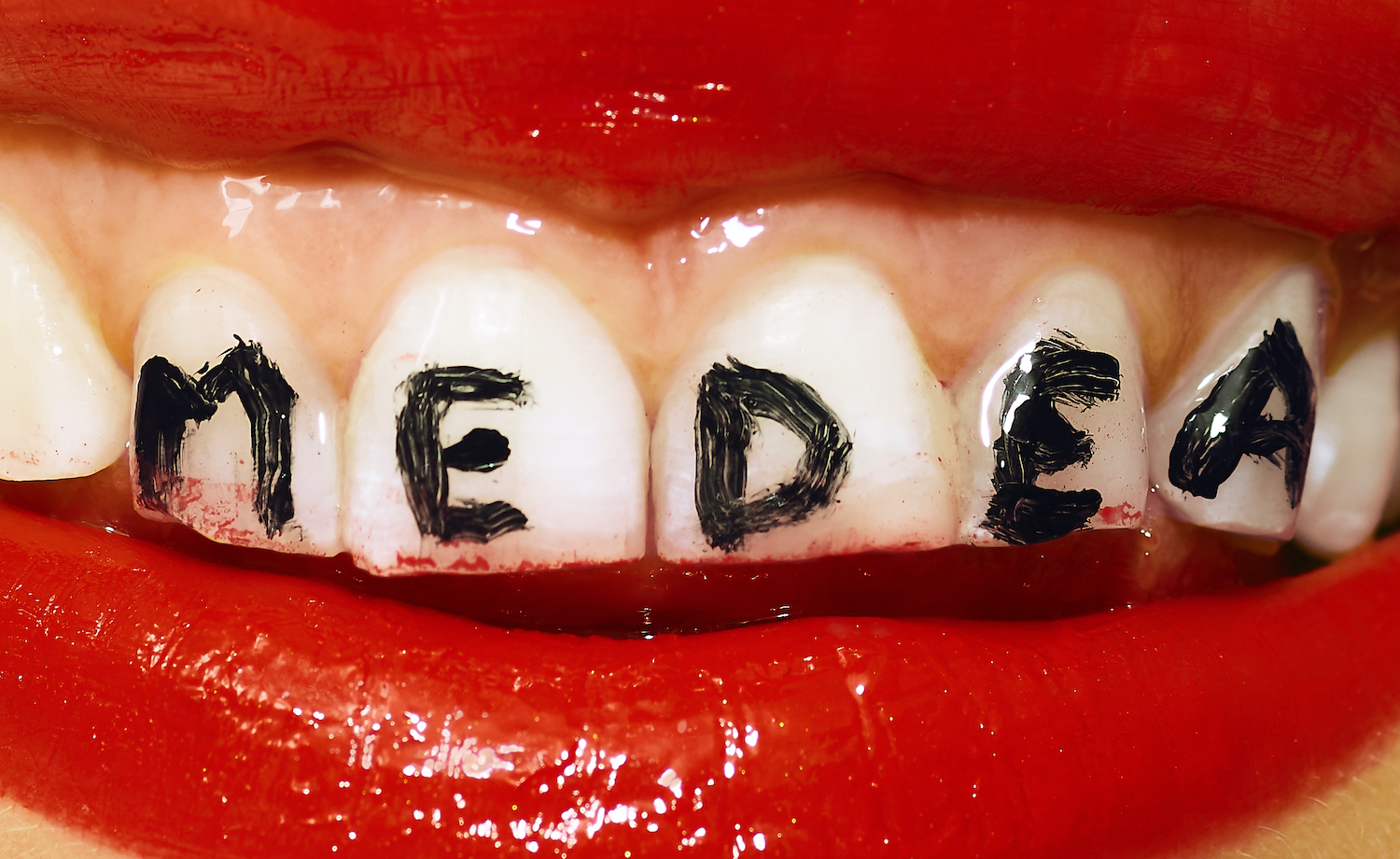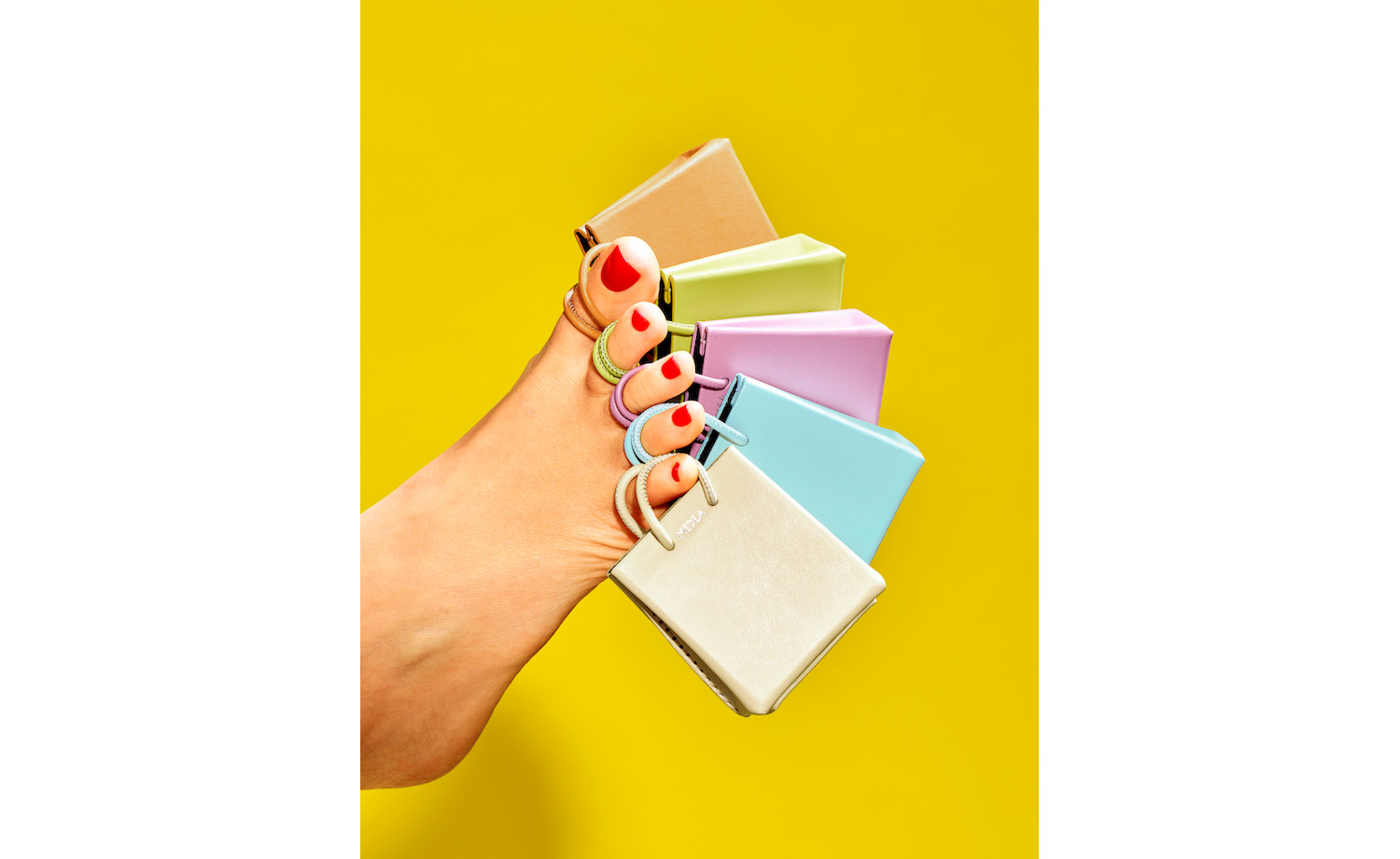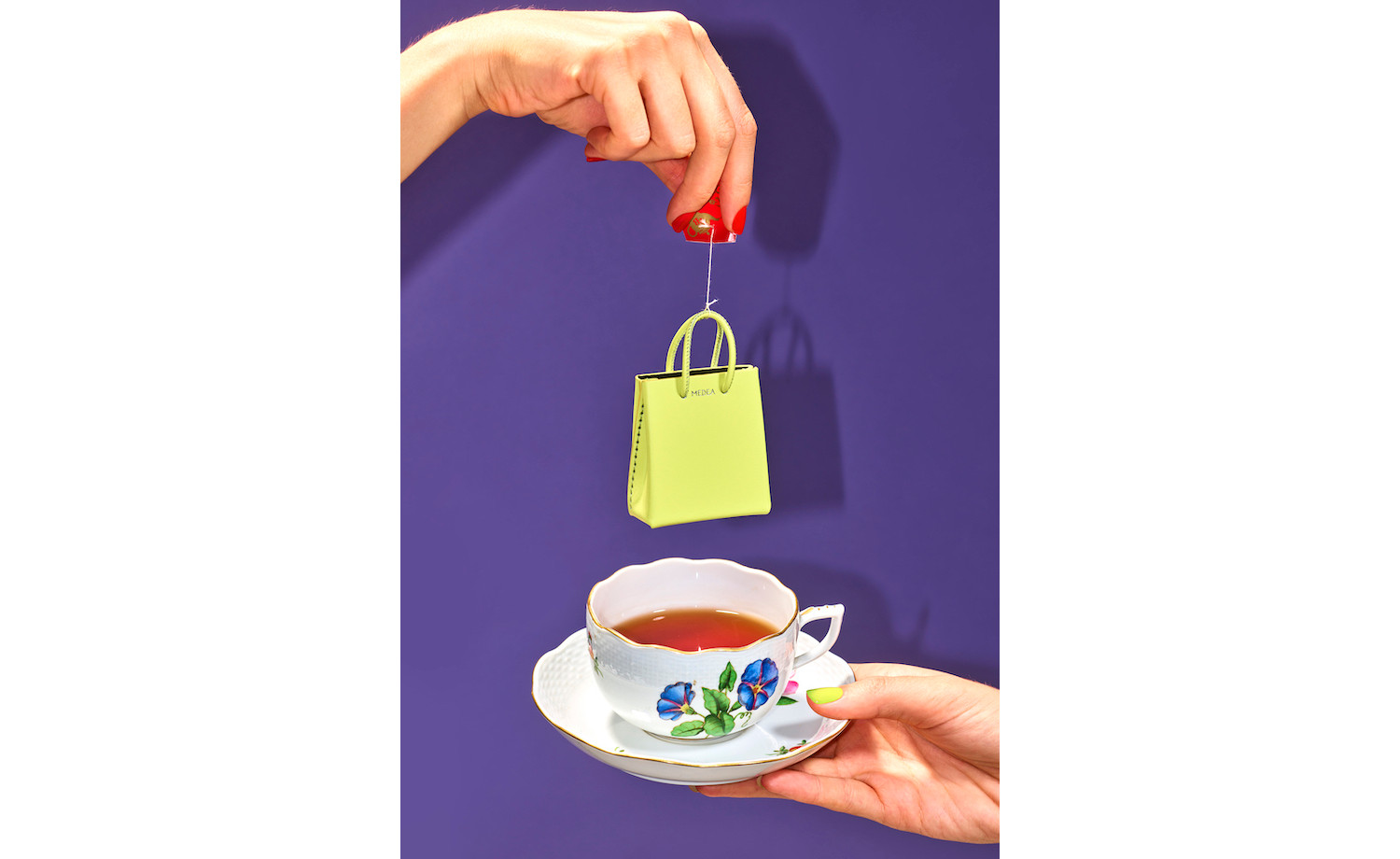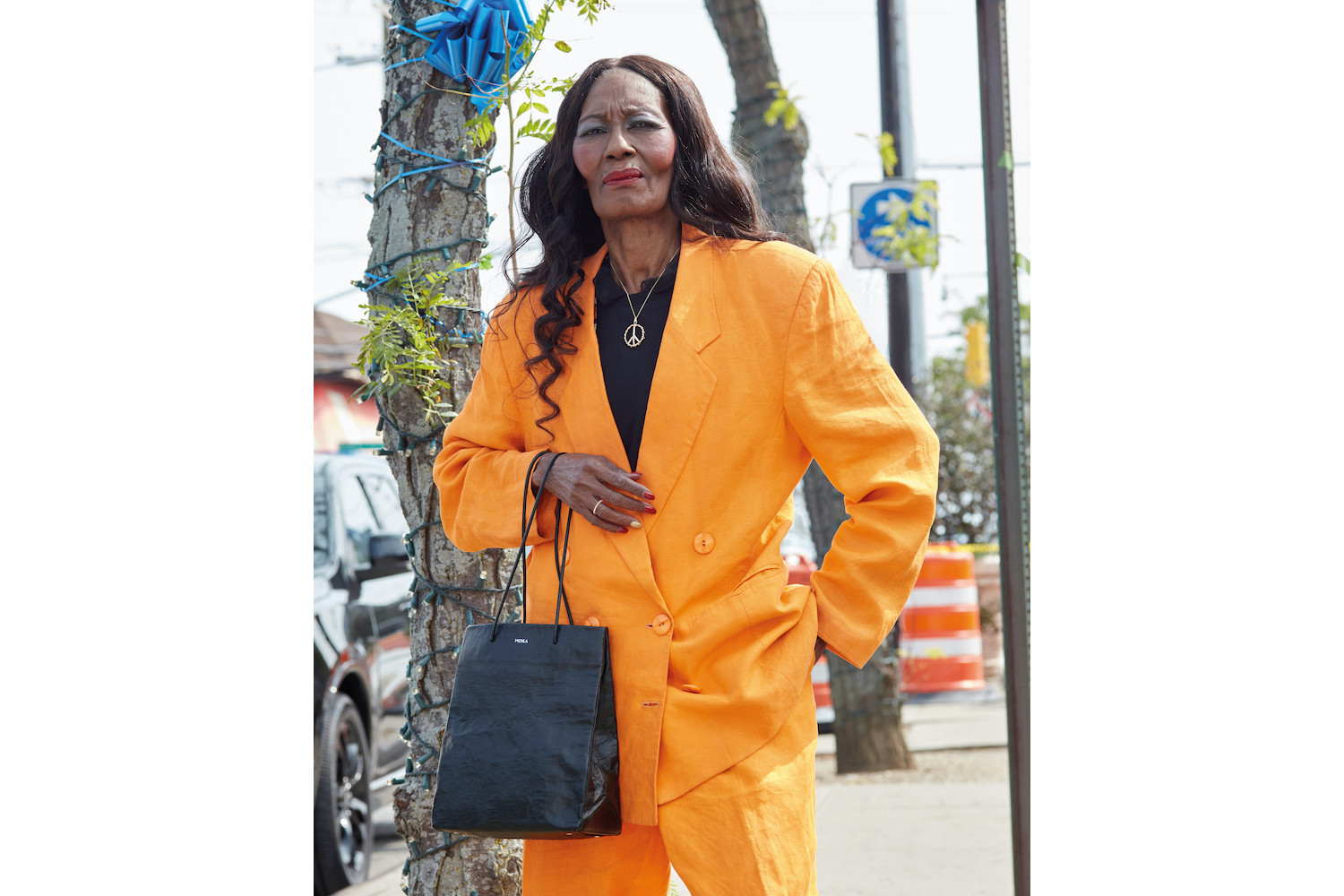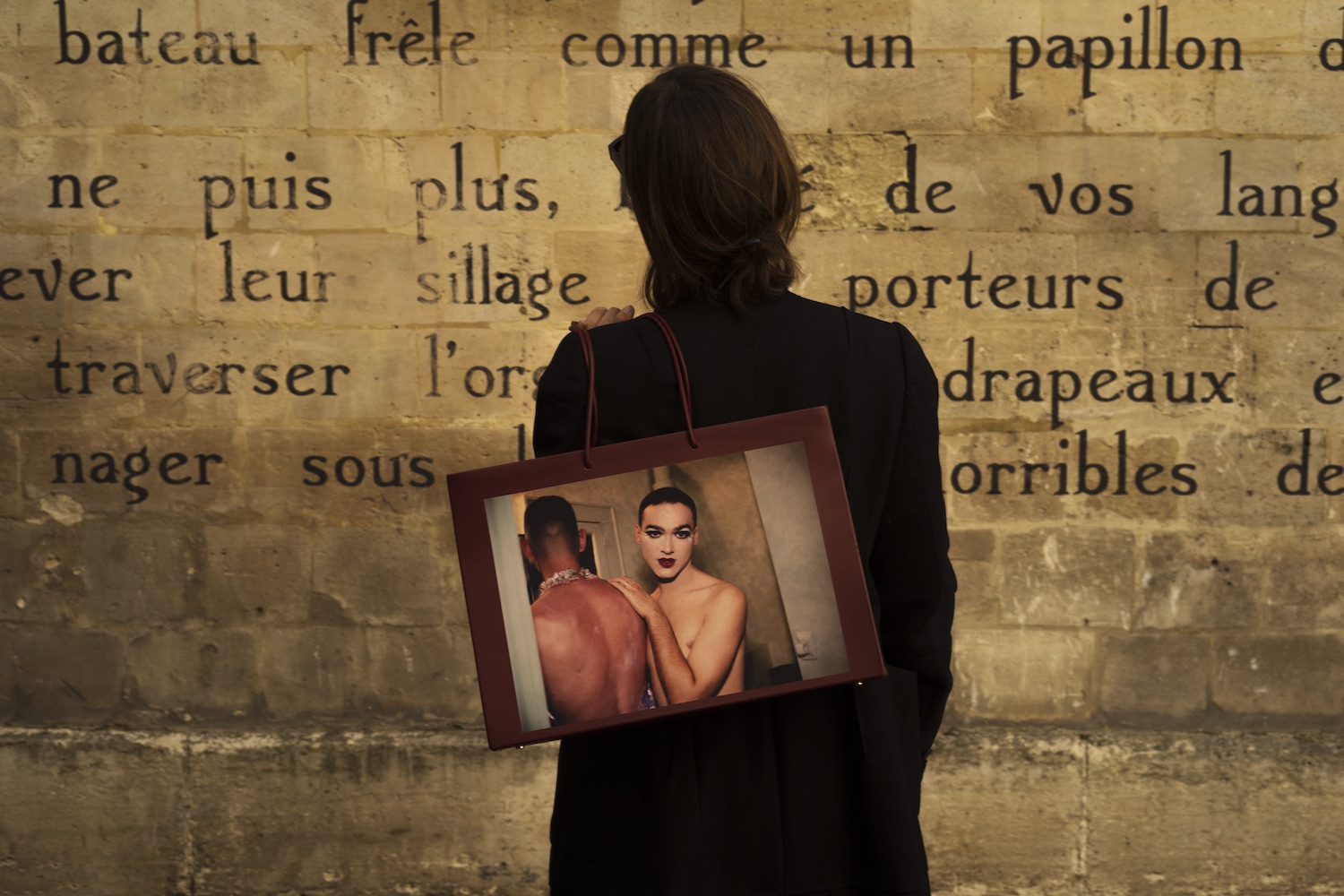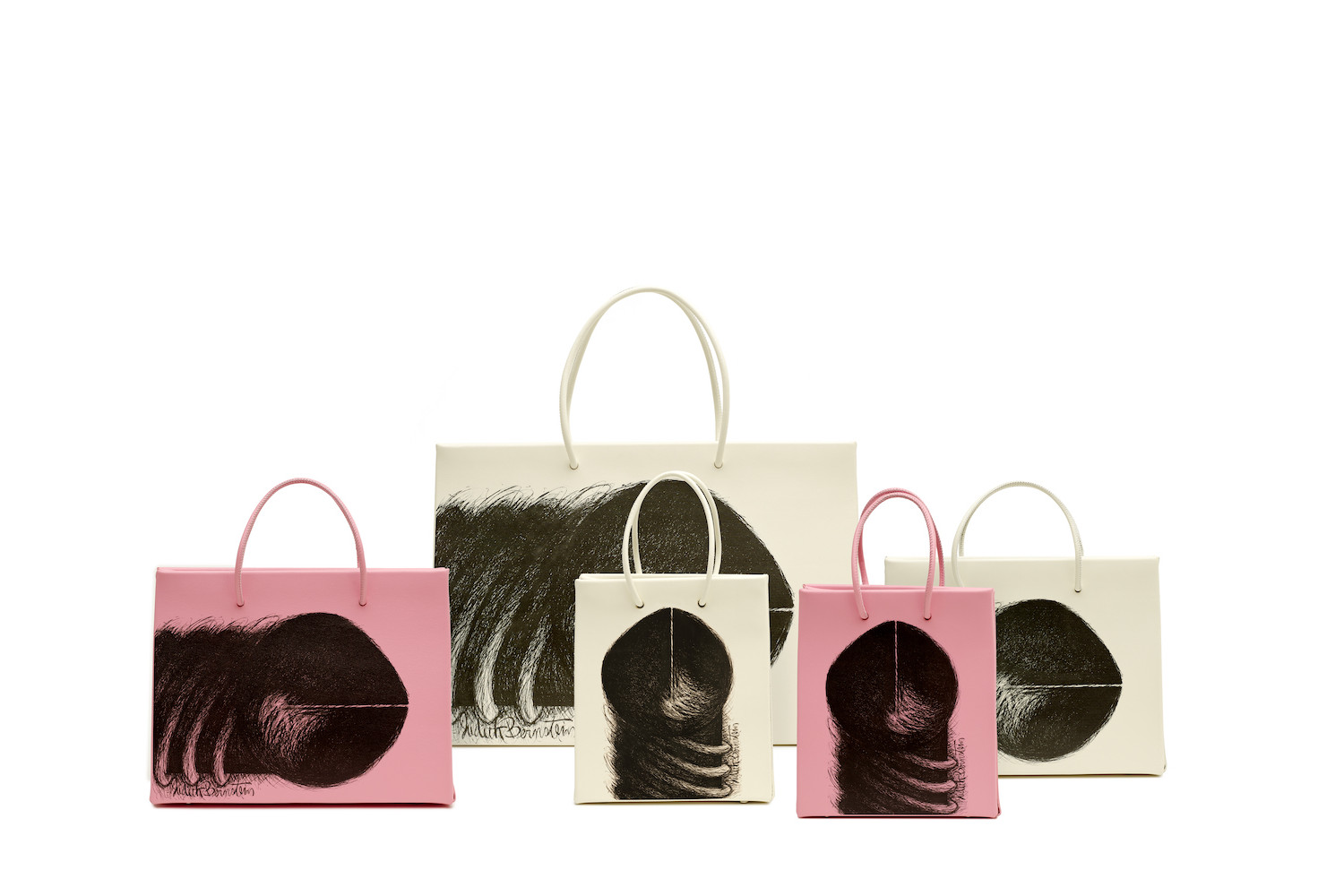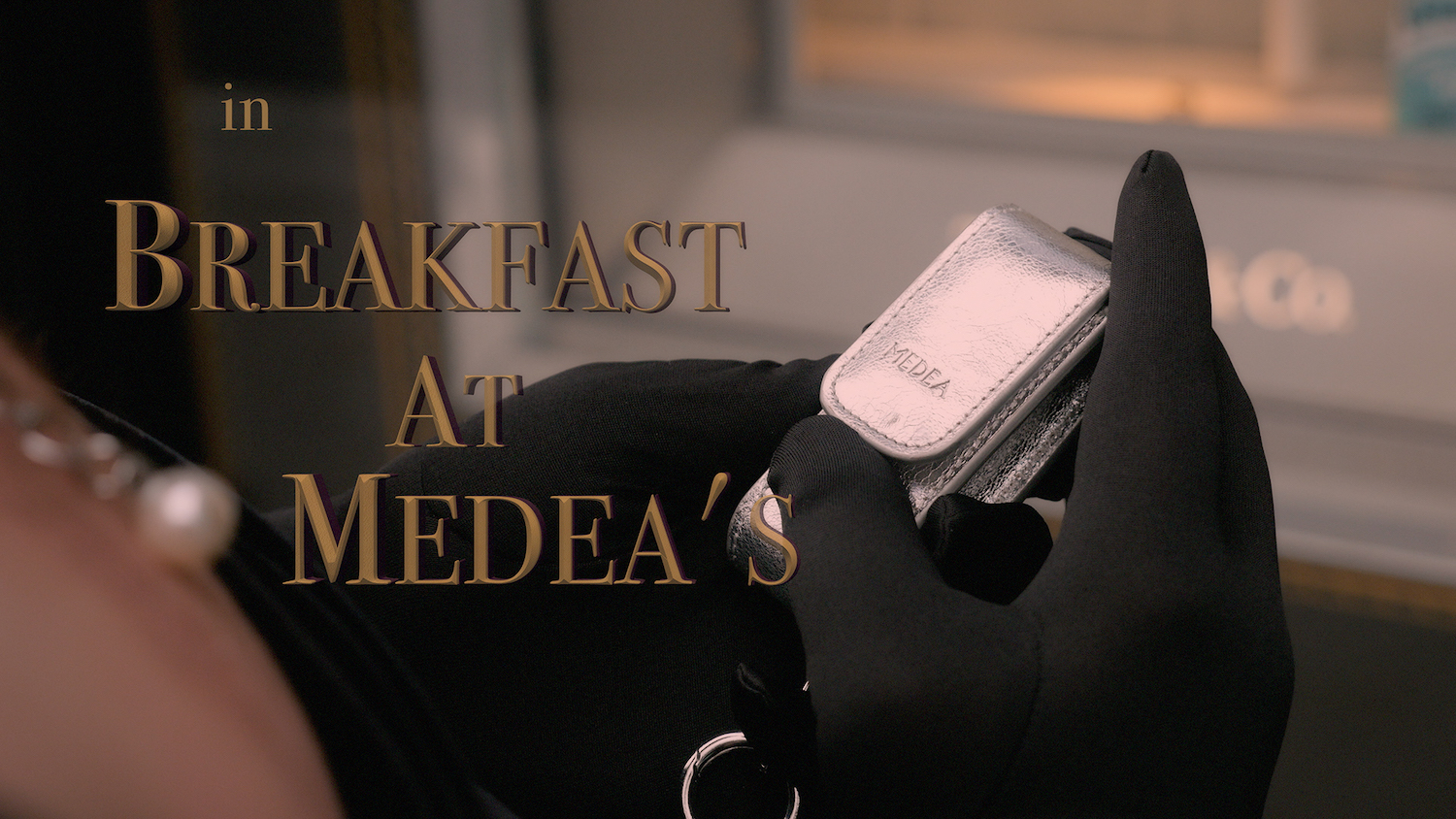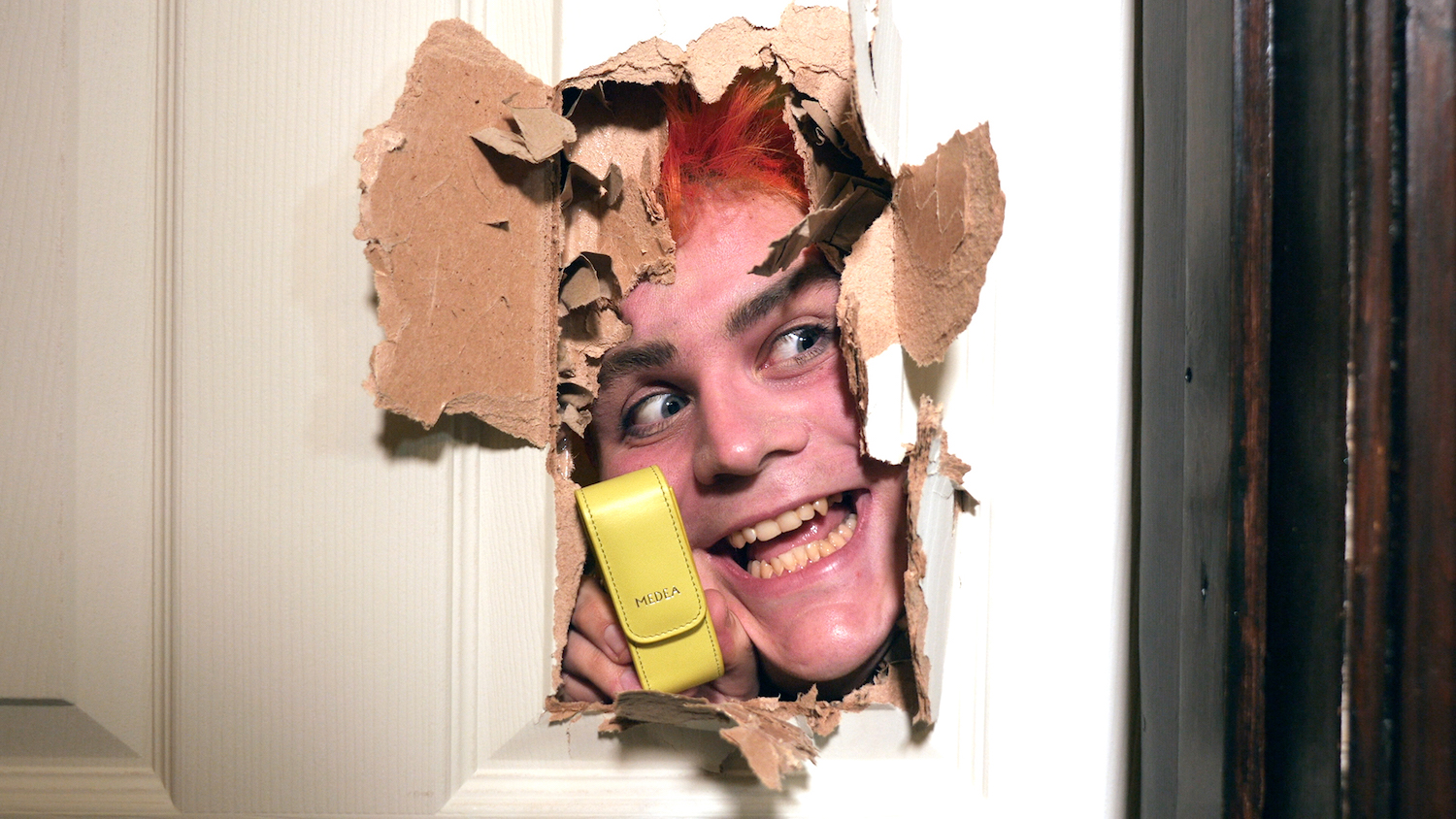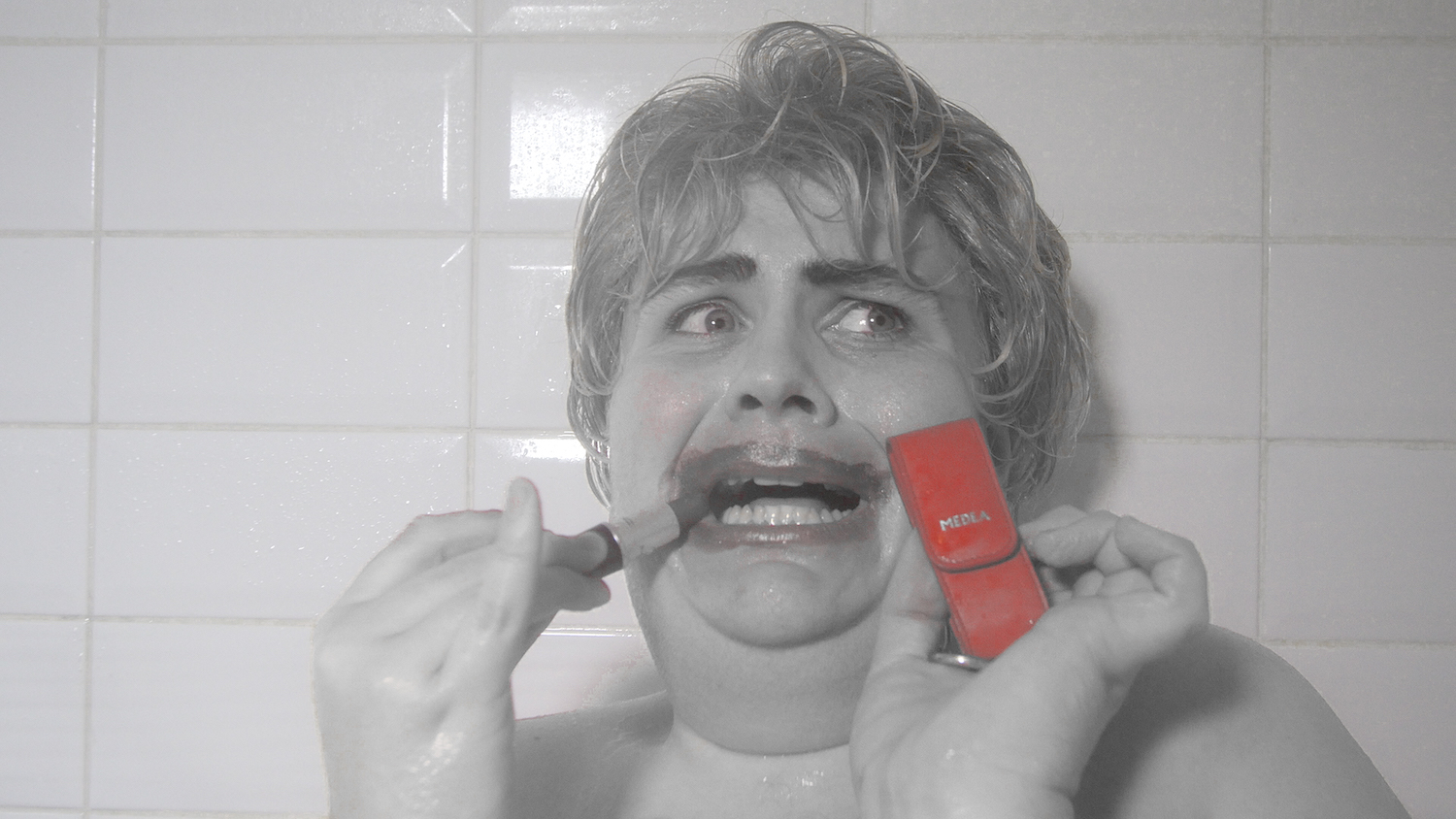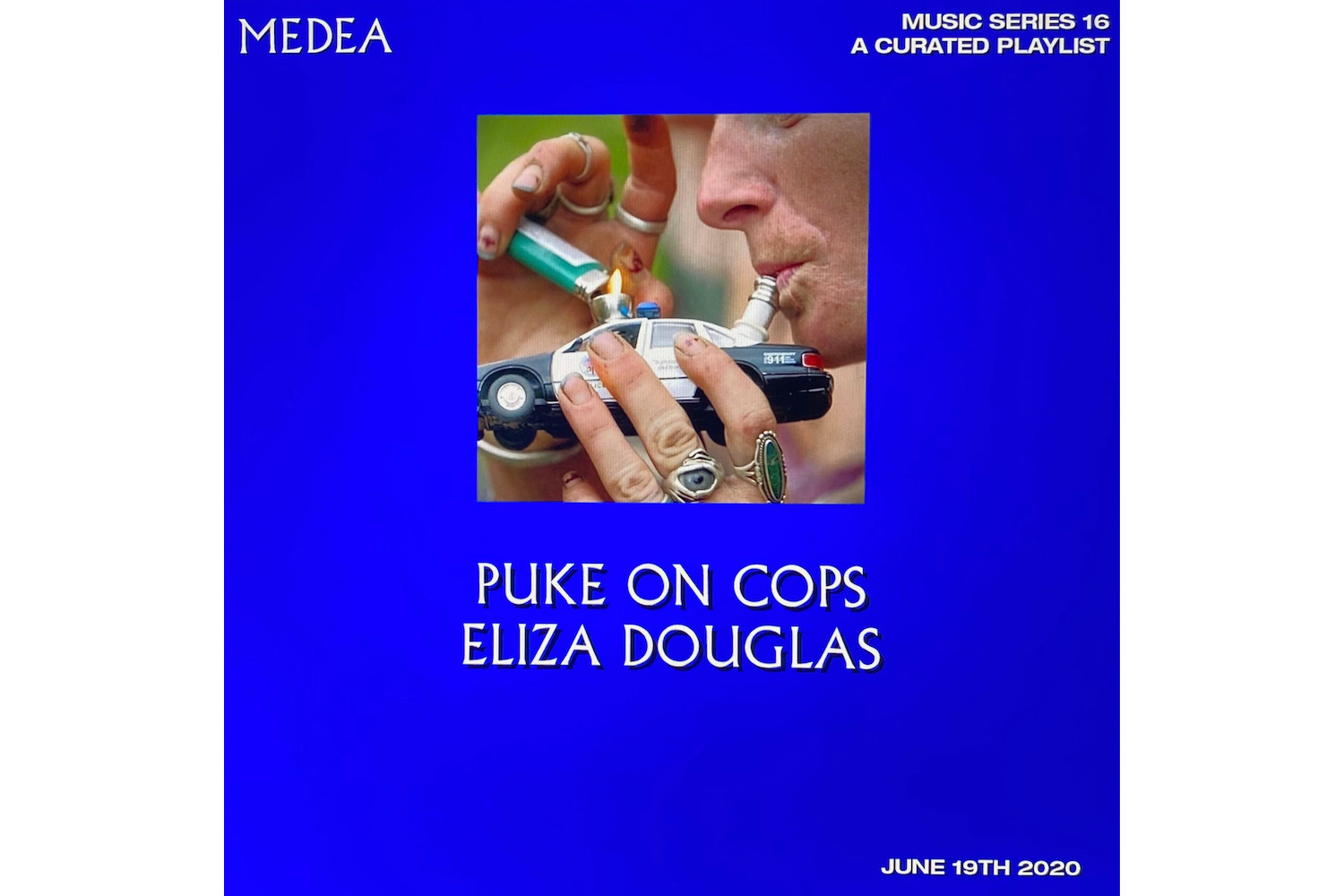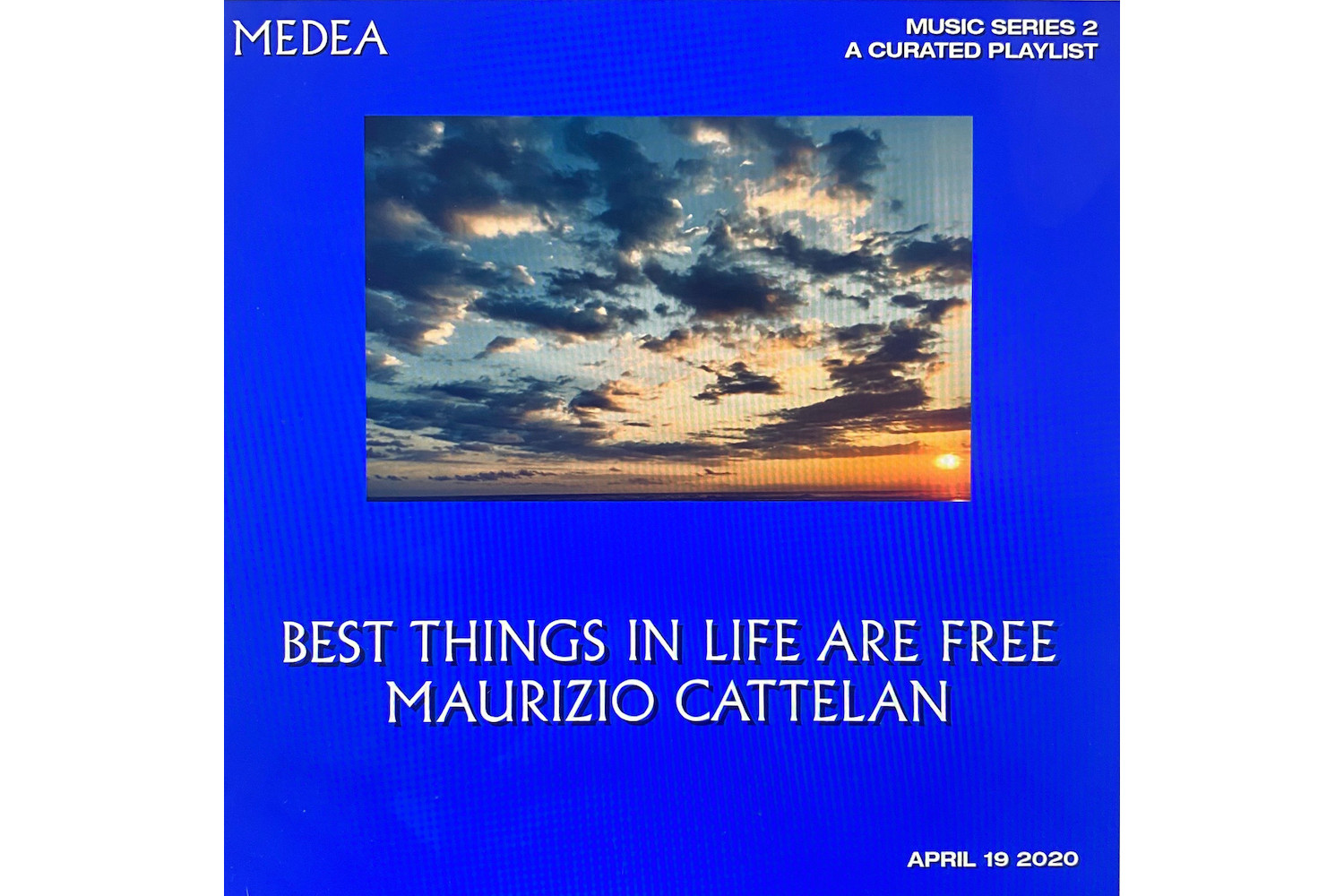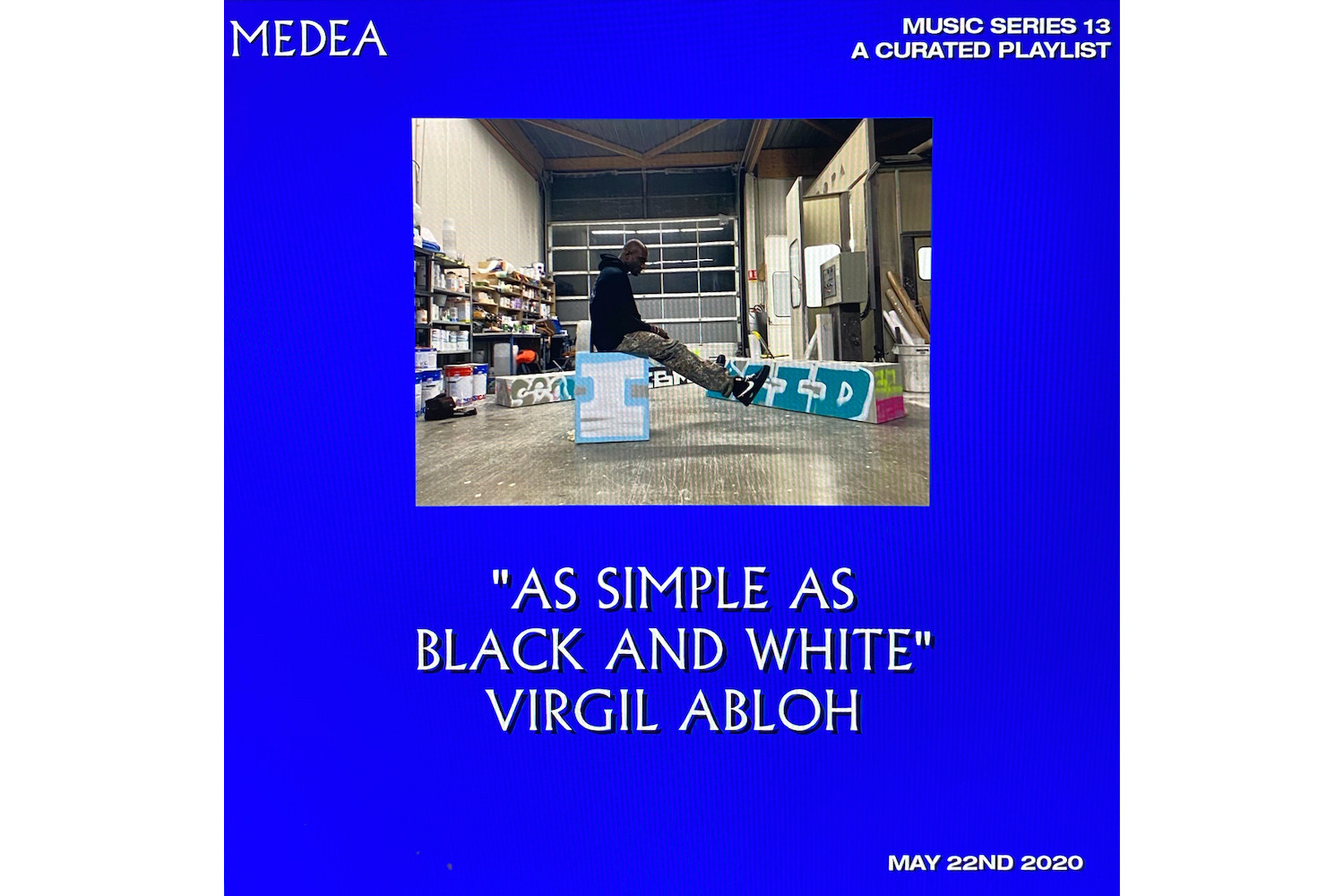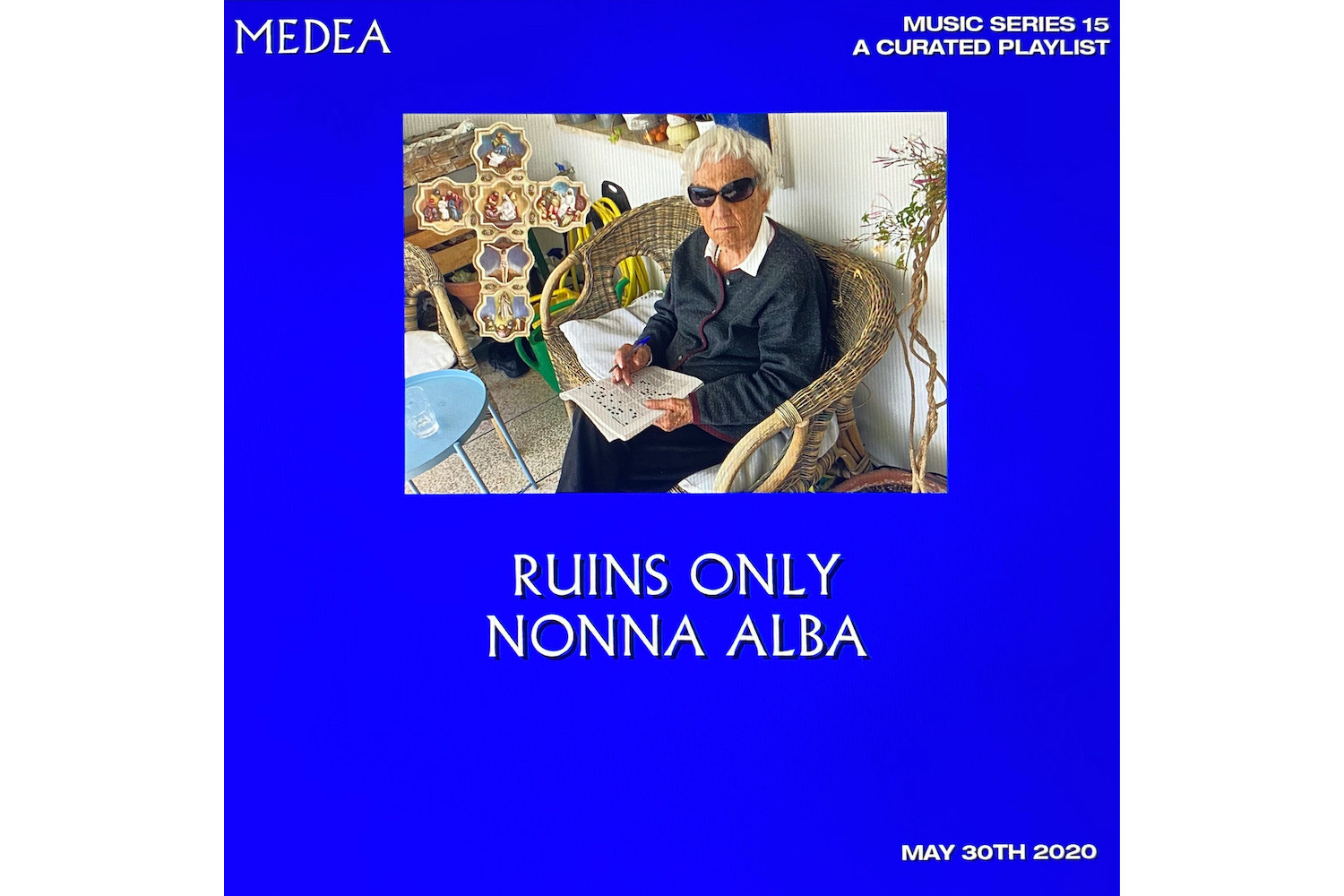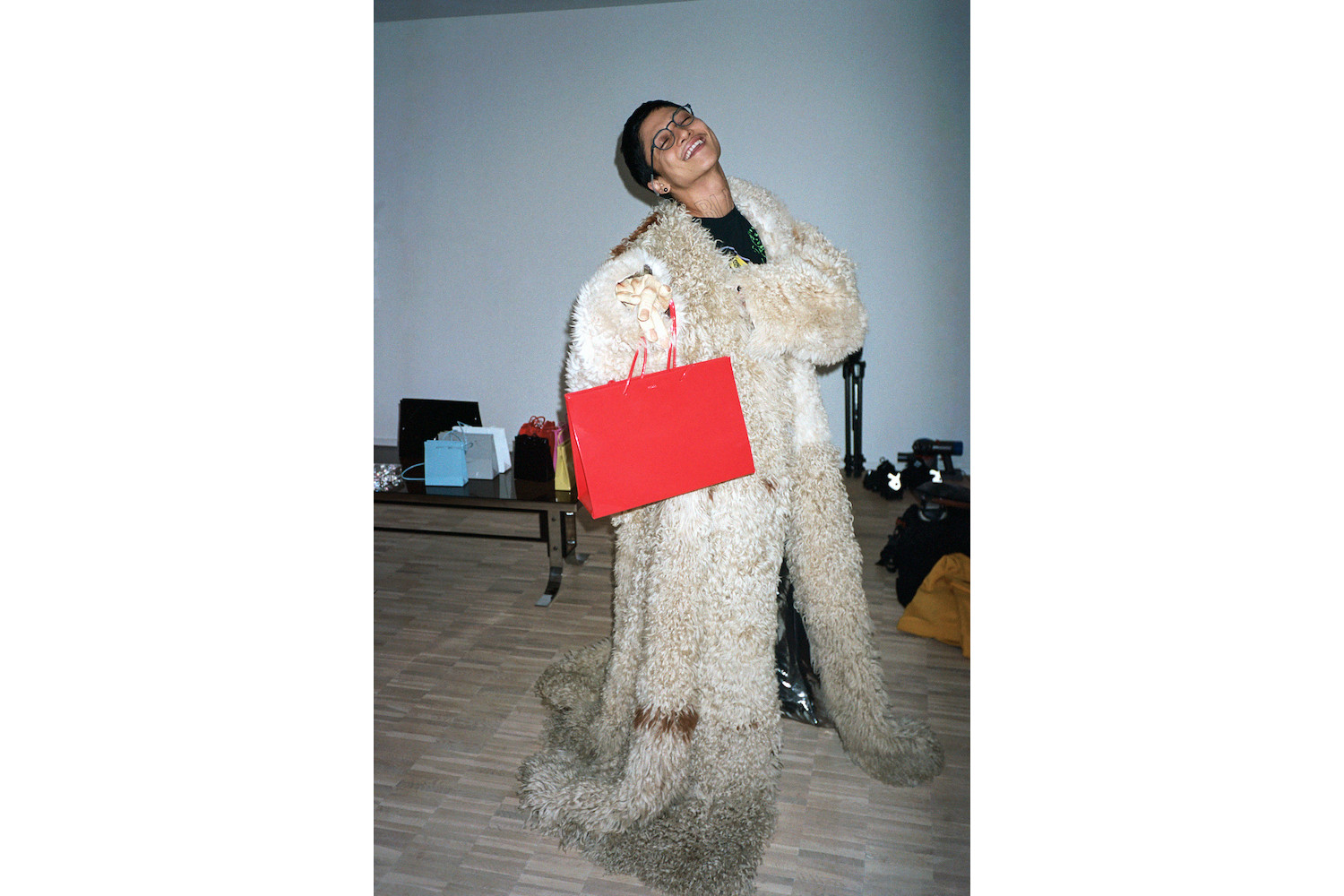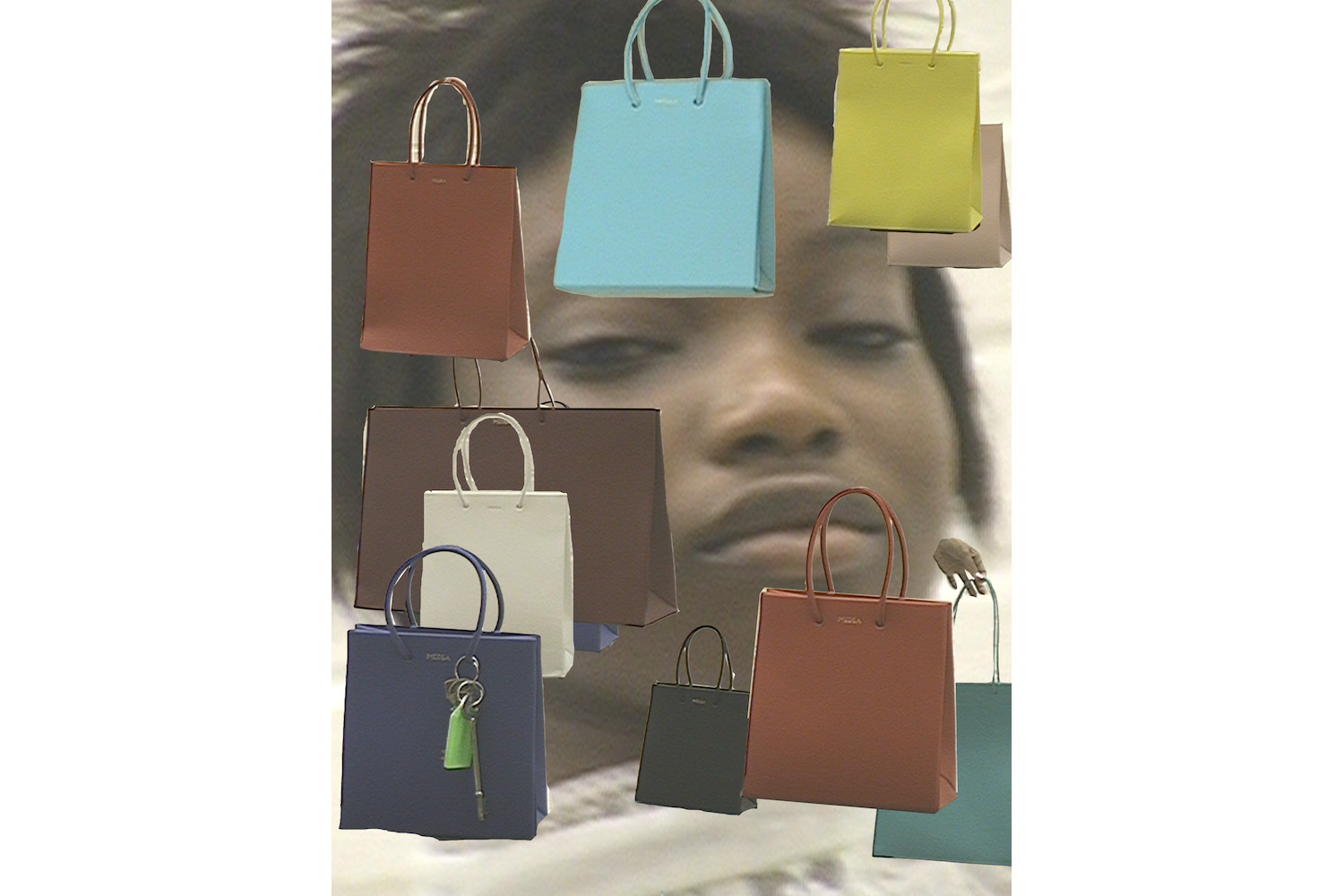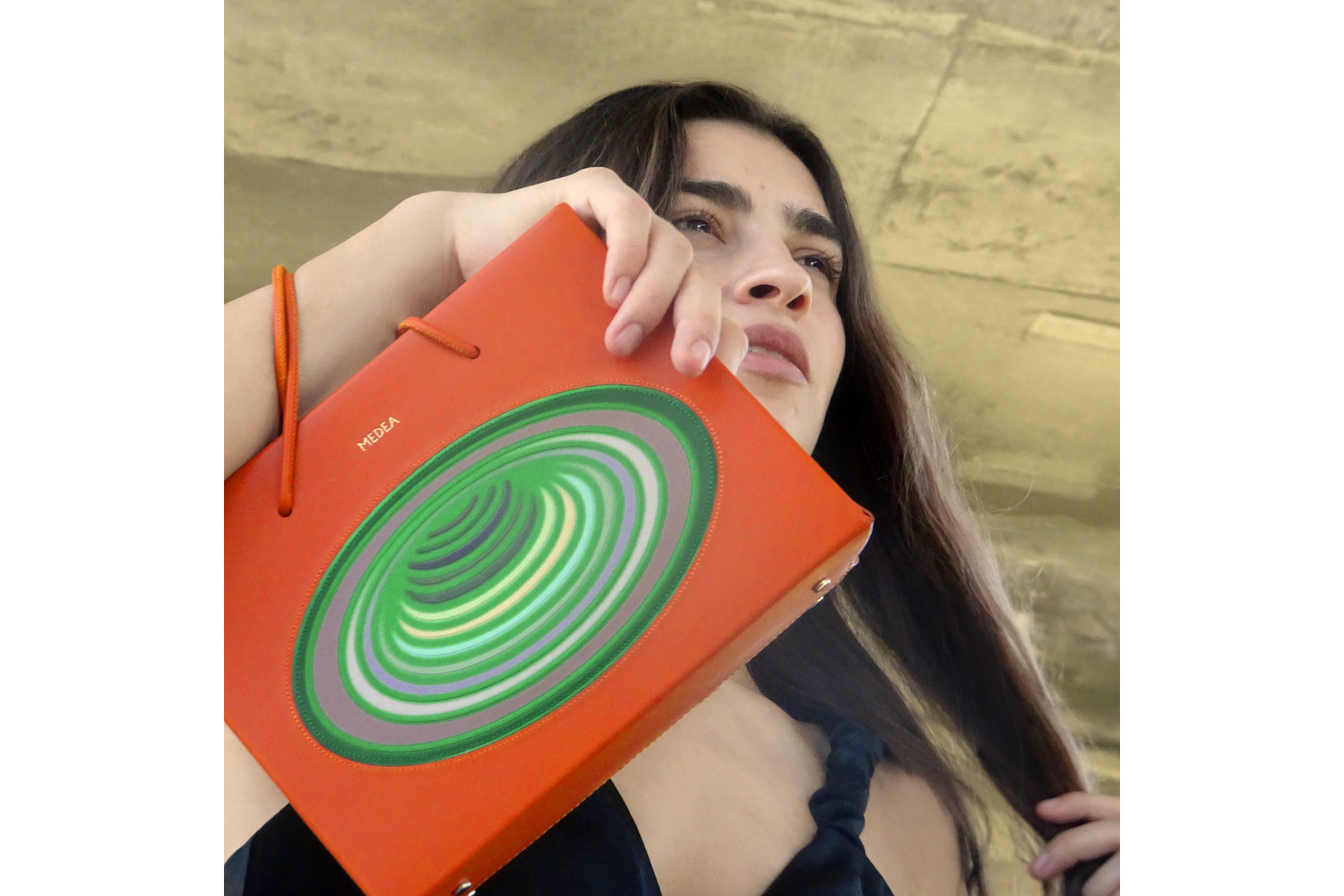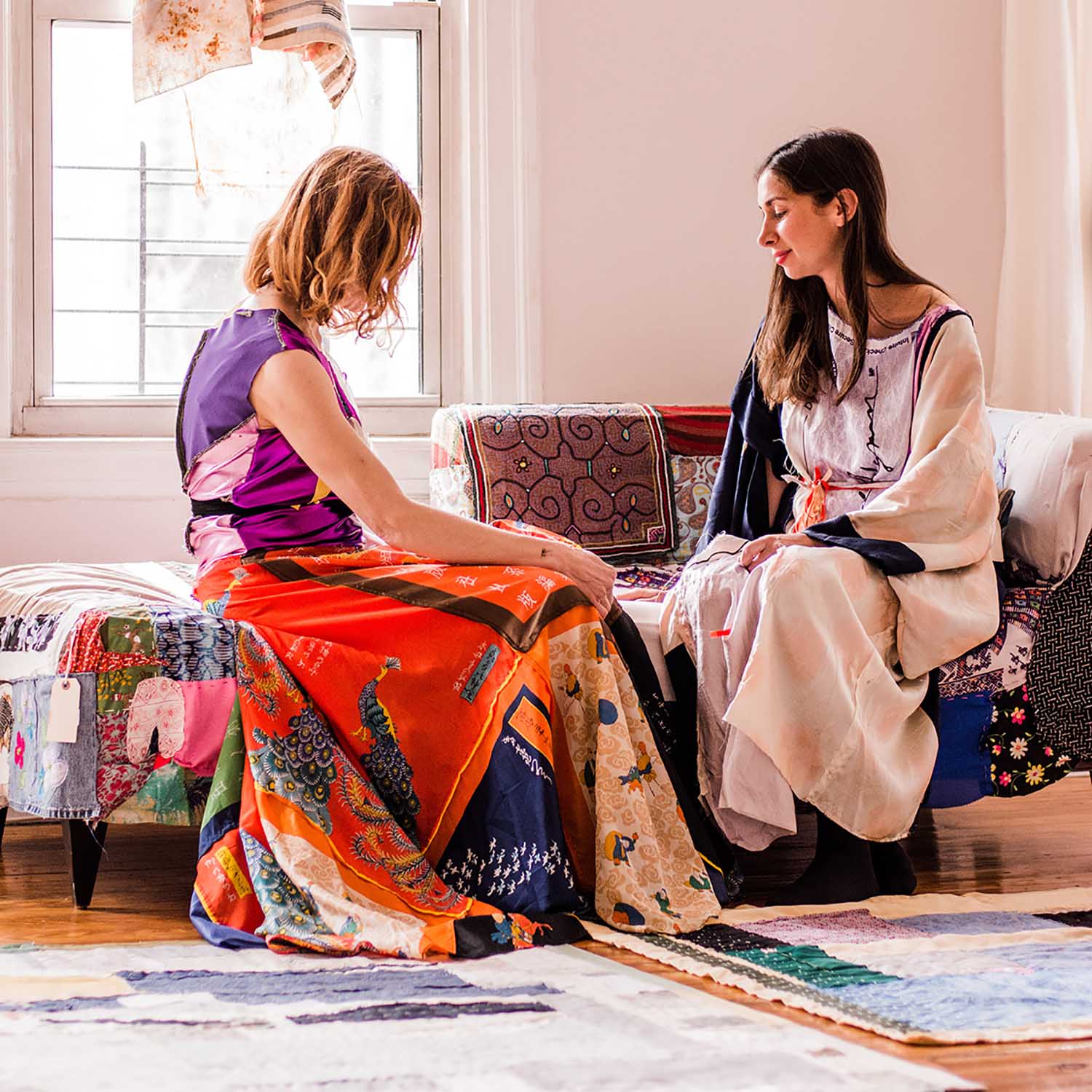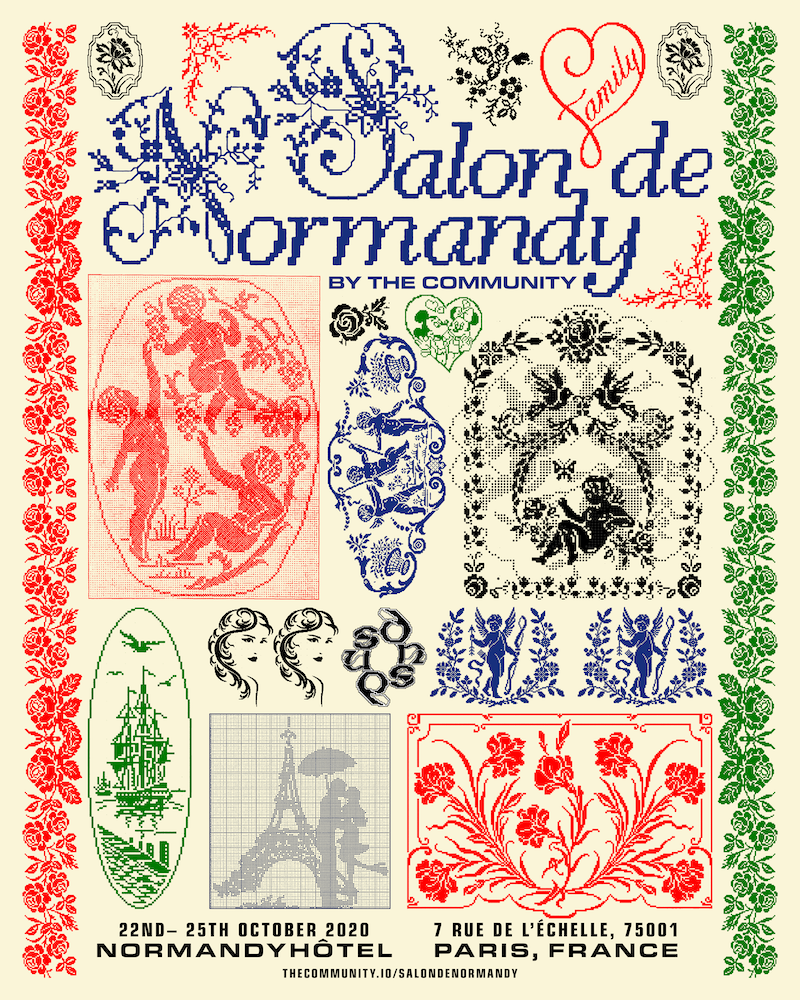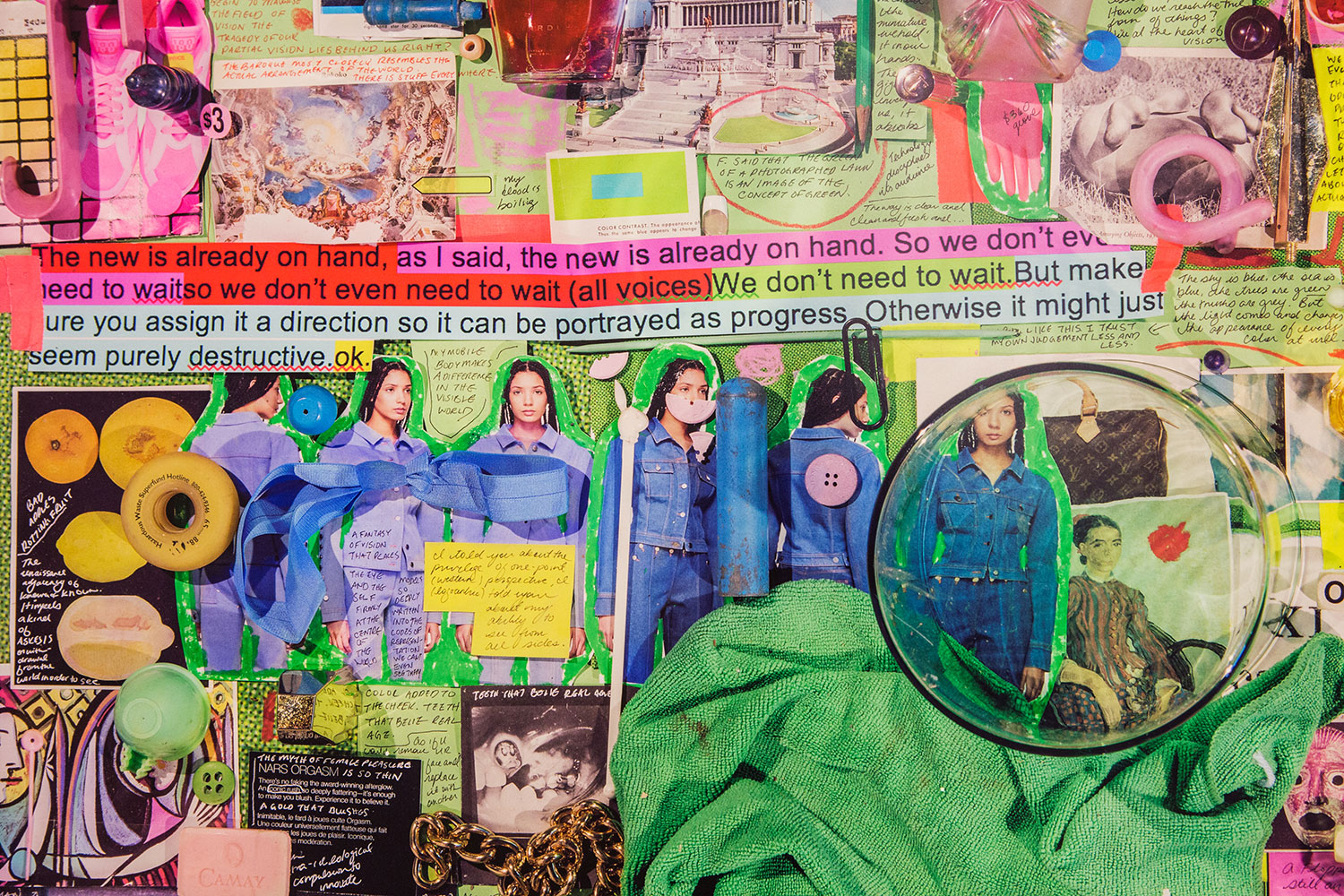The Venturini twins: power and unpredictability, color and intuition, lightning and thunder, skin and wigs, art and ideas, all combined in a perfect, unexpected, and radically new potpourri.
Medea: a myth reborn. Five letters that feel ancestral, evoking deep, carnal memories, tales from the pre-Christian Mediterranean, songs in ancient Greek, the look of Maria Callas in Pasolini’s 1969 film.
Their Medea is a meta-project, an international community, a basis for debate, and an explosive bag that is already a platform.
Gea Politi: Camilla, you lived in New York for ten years, where you collaborated with artist and photographer Ari Marcopoulos. Giulia, you were working on Toiletpaper magazine with Pierpaolo Ferrari and Maurizio Cattelan. You both have followed a creative path. Do you have a specific objective now with Medea?
Giulia Venturini: We spent ten years apart, since Camilla lived in New York while I lived between Milan and Paris. Our experiences were similar, almost parallel, even though we moved in different city contexts. But our aims have always had common goals.
Camilla Venturini: The circumstances that characterized our lives as young women made us return to Italy. Finding ourselves empathically and physically close, we decided to join forces and work for ourselves. Our friends also pushed us on our path, and to realize our projects. Our vision of contemporary art, both on the European and New York scene, has broadened our perspectives, allowing us to create Medea. We have a very precise idea of our project, which is based on the attempt to build an international community around our brand. It is very difficult for small brands to currently have a market in Italy. Our project must therefore have that extra quid that makes it special. The accessory is an element that has entered into our daily life, representing and enhancing us. We aim to make the wearer of our brand explosive, eclectic, and international.
GP: You just used the term “community.” What does this word imply in creating a project like yours?
CV; GV: We were able to achieve notoriety through the support of our community that we built over the years. We both are very outgoing people who have friends in various latitudes. We have many interests, which range from art to music to fashion. We were able to get closer to people who found our project original and then decided to support us by creating collaborations together. These collaborations have in turn widened our pool of contacts, giving us the opportunity to explore, dare, and continue on increasingly wide and diversified channels.
GP: What terms would you use to define the Medea project?
GV: It is definitely a project that can be defined as transversal and out of the box. Recently, we utilized the option “ask me something” on our Instagram stories. Surprisingly, the majority of people did not ask questions about the Medeabrand, but about us as individuals. They were mainly curious to understand who was behind the brand and what our personal interests were. The audience wanted to reach a more human dimension, maybe a more attainable one.
CV: Many asked us who we were going to collaborate with in the future.
GP: What is the message that Medea wants to express? Or rather, you founded a brand in 2018. What was your mission when you first started, and what is the mission now? Has there been a change, especially now during the Coronacene?
CV; GV: Our message hasn’t changed. Our ideas have obviously evolved over the years. We began creating bags and now we would like to make many other products, even though the bag itself still has many variations to study. We realized that during the first wave of the pandemic it wasn’t very “sensitive” to push sales, and, together with some friends, we launched playlists to listen to during moments of isolation, to be able to get closer and communicate with our community.
GP: Medea’s first limited-edition collection was in collaboration with Nan Goldin, followed by Judith Bernstein and now a campaign with Roe Ethridge. Do you think that contemporary art has “installed itself” in the path of all creative endeavors?
GV: Working with Roe Ethridge has been incredible! Initially we wanted to shoot the campaign in St. Moritz, Switzerland. It is a truly magical place with postcard-like locations. Unfortunately, at the time we could not leave New York, so we had to design and implement the campaign from the city. Fortunately, we are very happy with the outcome, especially in terms of the casting. We relied on a film-casting agency. We cannot get too attached to the realm of fashion and models. We prefer to use real, unbuilt people, who are able to transmit something unique. In fact, we used a film costume designer who created the looks for the campaign.
CV: Regarding the question about contemporary art, I think it’s a trend of the moment. The fashion world follows trends, almost always imitating each other.
GP: Various rappers and musicians are collaborating with the art world. Many are collectors, others have a broad knowledge of the system and have managed to establish a constant dialogue with contemporary art. In the new brands of the moment do you notice this connection, or do you think it is just a trend?
CV: In the fashion world there is the designer and photographer who create the campaign. In music there is more freedom. You have to rely on an artist to create the visual side. Musicians have a much more open way of thinking. So they are able to space out and create new, original concepts.
GP: If you could choose an artist no longer alive, who would you choose?
CV: Mike Kelley
GV: Carol Rama
GP: Do you have someone that helps you with production?
GV: Camilla and I create the product. However, we have an internal team at this Verona-based company that follows the developments of the product. We are highly supported and we interact with the company itself for every detail that concerns manufacturing.
CV: In the world of Medea, a community has formed, almost an extended family, which always supports and advises us in the choice of music, art, and design. Also, we often agree to work with different people, so that we always have a cycle of different ideas and projects.
GP: Pier Paolo Pasolini’s Medea, interpreted by Maria Callas, is an iconic image — one of the most powerful of the last century. What was the influence of the classical figure of Medea? What is its meaning for you?
GV: We have been influenced by the Medea interpreted by Maria Callas, rather than the mythological figure itself.
CV: When we think of Medea, we think of Maria Callas, who we consider the first true diva. Pasolini as a figure has been a great legend for us! The word “Medea” is very strong and at the same time visual. We are particularly attached to this myth since, ironically, it reminds us of our brother’s email address when he was young, which included the word “medea.”
GP: Which contemporary figures influence you the most?
CV: Nan Goldin was the first person we put on our list of artists we wanted to collaborate with. Yoko Ono is also a great artist who influenced us.
GV: Our community and friends continue to inspire us. As mentioned earlier, we have also created a playlist called the “Medea Music Series,” which is edited by musicians with great sensitivity and taste. In the past we composed playlists with artists like Eliza Douglas and Maurizio Cattelan; fashion figures like Virgil Abloh; musicians like Daft Punk, Vampire Weekend; designers like Francesco Risso and Kiko Kostadinov. It’s a fun and almost casual project since there is never a scheduled list of who will make the playlist. For example, we asked our dear friend’s ninety-seven-year-old grandmother to create a selection of songs for our project. Often we start with the creation of the playlist and then we collaborate on the design for our bags.
GP: Who do you collaborate with in creative terms?
GV: We collaborate with fantastic people who are always available for us! We always want to work with different people who give a sense of variety to the product.
CV: We’ve interacted with Blood Orange, a musician that we often confront. He also created a playlist for us, and we collaborated to create a concert in Paris. He did the soundtrack for the advertising campaign. In a way, he helped form part of Medea’s aesthetic.
GP: You are “dynamiters.” Do you throw dynamite for an innate sense of liberation or for fear of dying in silence?
CV; GV: Both. It is unthinkable for us to launch a product or a project that is flat or basic. Maybe on a commercial level having a static (aesthetically speaking) product can work. But we want to communicate something that is like dynamite, explosive! Everything but not dying in silence. When we decide to plan a product or an advertising campaign we want to distort and feed controversial thoughts in people. When a young person approaches us, congratulating us on our work, we feel that we have reached our goal.

